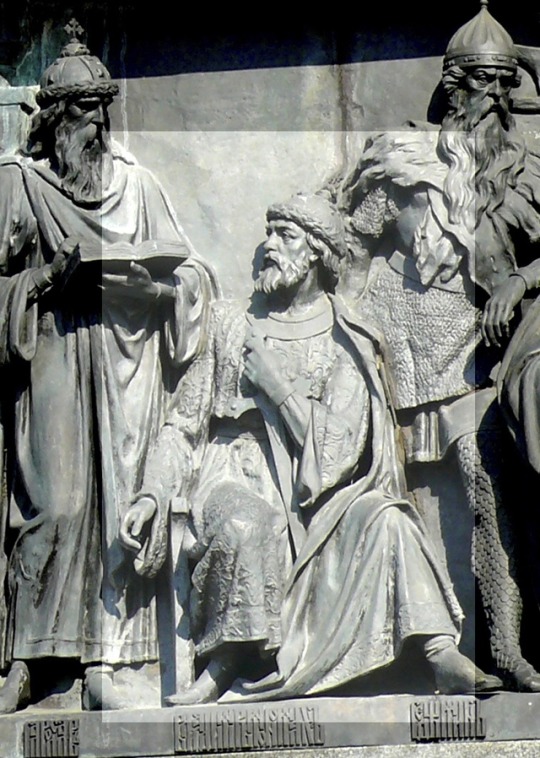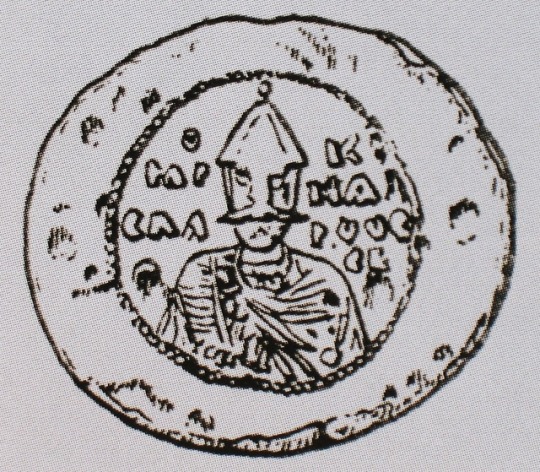Text
Hurray
Insulin Should be Free and Accessible to Every Diabetic.
105K notes
·
View notes
Text
I want to talk to your about the history of Russian law!
Russian law appeared with christening of Russia in 988 BC. Prince Vladimir was the first one of the princes to become orthodoxy Christian after his visit to the Byzantine Empire also known as the Eastern Roman Empire, his decision was to christine Russia and this was the first step to becoming an unitary state.
Next one was his son Yaroslav the Wise, he is known with producing the codification of legal customs and princely enactments, and this work served as the basis for a law code called the “Russian Truth” but it was so far from the modern ones.
The next one to produce a codification was Vladimir II Monomakh, his “Testament to his own children”. It defined some social protection positions as a help for poor people.
Ivan III Grand Prince of Moscow was coronated on 14th of April in 1502. The character of the government of Moscow changed significantly under Ivan III, taking on a new autocratic form. This was a natural consequence of the hegemony of Moscow over the other Vladimir-Suzdal lands, but also to new imperial pretensions. After the fall of Constantinople, orthodox canonists were inclined to regard the Grand Princes of Moscow, where the Orthodox Metropolitan of Kiev moved in 1325 after the Mongol Invasions, as the successors of the Byzantine emperors. Ivan himself appeared to welcome the idea, and he began to style himself tsar in foreign correspondence. Ivan's success was emphasized by scientists in centralizing control over local rulers; however, that his reign was also “a period of cultural depression and spiritual barrenness. Freedom was stamped out within the Muscovite lands. By his anti-Catholicism Ivan brought down the curtain between Muscovy and the west. For the sake of territorial aggrandizement he deprived his country of the fruits of Western learning and civilization.” This movement coincided with a change in the family circumstances of Ivan III. After the death of his first consort, Maria of Tver (1467), and at the suggestion of Pope Paul II (1469), who hoped thereby to bind Muscovy to the Holy See, Ivan III wedded Sophia Palaiologina (also known under her original name Zoe), daughter of Thomas Palaeologus, despot of Morea, who claimed the throne of Constantinople as the brother of Constantine XI, the last Byzantine emperor. Frustrating the Pope's hopes of reuniting the two faiths, the princess endorsed Eastern Orthodoxy. Due to her family traditions, she encouraged imperial ideas in the mind of her consort. It was through her influence that the ceremonious etiquette of Constantinople (along with the imperial double-headed eagle and all that it implied) was adopted by the court of Moscow.
At this point I want to make a pause, if it’s interesting for you, tap a “like” buttons, text me your own thoughts and ask me your question.
I’ll publish the continuation of my article later.)



#russian history#russian law#orthodoxy#byzantine#romanlaw#roman law#common law#lawyer#christining#historical facts#civil law
0 notes
Photo
Oh my goddess, this is kind of ridiculous, according to moral and patriotic terms it might be right, but I think it directly offends players rights.



Should have known it wouldn’t be long.
50K notes
·
View notes
Text
“Duty without a right is a slavery; right without duty is an anarchy.”
— Hugues Félicité Robert de Lamennais
0 notes
Text
“Laws are like spider's webs: If some poor weak creature comes up against them, it is caught; but a big one can break through and get away.”
— Solon
0 notes
Text
First of all, I want to tell you about law system of my country, it appears as The Romano-Germanic Legal System is a legal system originating in Europe and Russian Federation, intellectualized with the framework of late Roman law, and whose most prevalent feature is that its core principles are codified into a referable system, which serves as the primary source of law.
What does code mean? Code is a type of legislation that purports to exhaustively cover a complete system of laws or a particular area of law as it existed at the time the code was enacted, by a process of codification.
It is a component of the European law, and was developed around the same time as its counterpart.
It was applied primarily in the colonies established by European colonial powers, like Portugal, Spain, etc.
This system is heavily based on the concept of following judicial statutes.
Even in this system, the judge brings the charges; however, he works by following a set of established rules within a framework.
This framework is designed by a set of legal experts, government legislation are based on these established rules.
Thus, in this system, the role of the judge is to hear out the case facts and read the sentence based upon the written set of laws.
2 notes
·
View notes
Text
Hello! I’m new to Tumblr, I want to share my law interpretation ideas with people that are interested in it.
I’d appreciate if you’d follow me and tell me some fresh points of view on law of your country.
We also could discuss it.
1 note
·
View note